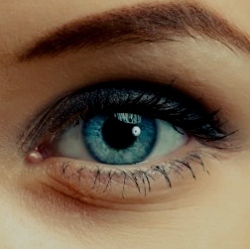
The team next tested compound 29 in an eye-drop formulation in mice predisposed to cataracts. In experiments, they found that the drops partially restored transparency to mouse lenses affected by cataracts, as measured by a slit-lamp test of the sort used by ophthalmologists to measure cataracts.
Similar results were seen when compound 29 eye drops were applied in mice that naturally developed age-related cataracts, and also when the compound was applied to human lens tissue affected by cataracts that had been removed during surgery.
Gestwicki cautions that slit-lamp measures of lens transparency used in the research are not a direct measure of visual acuity, and that only clinical trials in humans can establish the value of compound 29 as a cataract treatment. He has licensed the compound from U-M, however, and Makley, a former graduate student and postdoctoral fellow in the Gestwicki laboratory, is founder and chief scientific officer of ViewPoint Therapeutics, a company that is actively developing compound 29 for human use.
Dogs are also prone to developing cataracts. Half of all dogs have cataracts by nine years of age. An effective eye-drop medication could potentially benefit about 70 million affected dogs in the United States.
